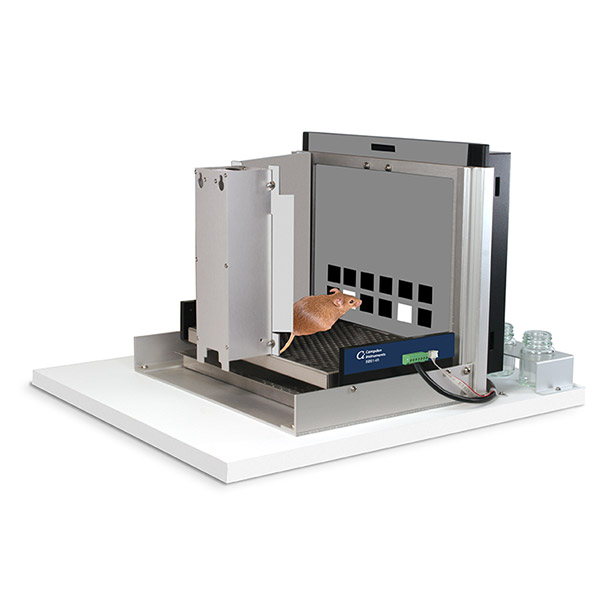
The rodents are required to discriminate between two white squares on the screen. Responses to squares on one side of the screen will be rewarded, while responses on the other side of the screen will be punished with a time out period. The distance between the two squares is varied from trial to trial. Animals with lesions in the dorsal hippocampus were impaired when the locations were close together, but not when they were far apart. Once 7 out of 8 trials are responded to correctly, the correct side is reversed, adding a reversal learning component. It is sensitive to hippocampal lesions and associated with glutamate receptor regulation and signalling.
A mouse performing the Location Discrimination for Rodents (LD), using the bottom 6 windows in the 12 window mask.
Palmer, D., Dumont, J. R., Dexter, T. D., Prado, M. A. M., Finger, E., Bussey, T. J., & Saksida, L. M. (2021). Touchscreen cognitive testing: Cross-species translation and co-clinical trials in neurodegenerative and neuropsychiatric disease. In Neurobiology of Learning and Memory (Vol. 182, p. 107443). - Abstract
Yoo, S., Stremlau, M., Pinto, A., Woo, H., van Praag, H., & Curtis, O. (2021). Effects of combined anti-hypertensive and statin treatment on memory, fear extinction, adult neurogenesis, and angiogenesis in adult and middle-aged mice. Cells, 10(7), 1778. - Abstract
Trammell, T. S., Henderson, N. L., Madkour, H. S., Stanwood, G. D., & Graham, D. L. (2020). GLP-1R activation alters performance in cognitive tasks in a sex-dependent manner. Neurological Sciences. - Abstract
Second Generation Bussey Chamber developed for mice with Intelli-interface supports up to 20 chambers on one PC. On the strength of 10 years of feedback and development, the system is even more flexible and with more features.
Adapted for rats, this is a spatial memory task with a reversal learning component. It is sensitive to hippocampal lesions and associated with glutamate receptor regulation and signaling.

